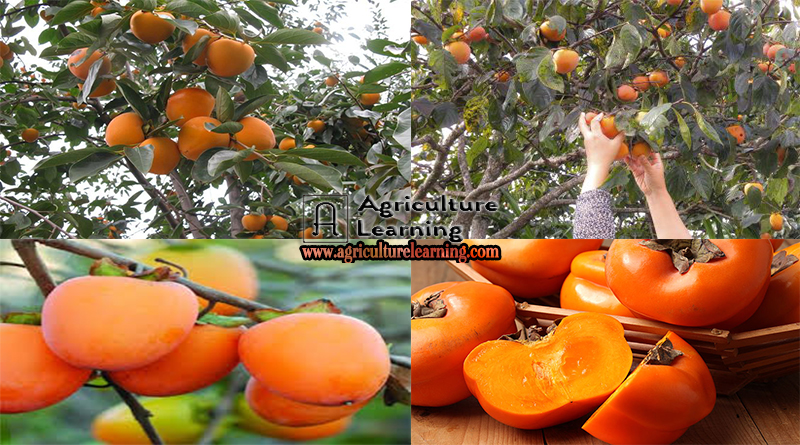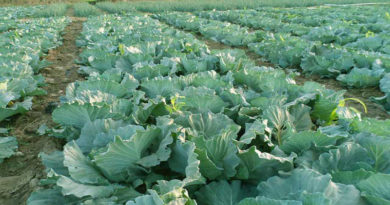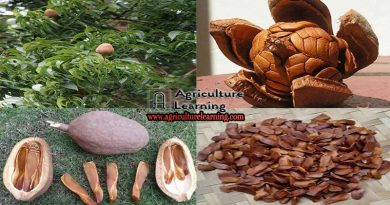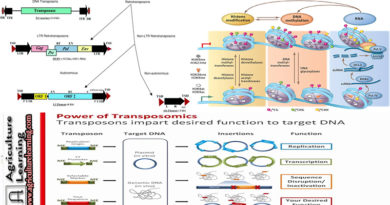Persimmon fruit ( Health Benefits and Nutritional value )
Persimmon is the national fruit of Japan. The scientific name of Persimmon is “ Diospyros Kaki”. It’s mainly the fruit of Asian Continent. It is Japan’s popular fruit. The name of that fruit in Japanese language Hoshigaki, in China Shibing, in Korea Gotgam or Hangul and Vietnam Hong Kho.
It is being cultivated in Natore,Bangladesh because of the favorable growing conditions. Bangladeshi agricultural scientist S M Kamruzzaman, a retired additional secretary started cultivating the fruit at his own house back in 2002. During that year, he collected 15 seeds of 10 species from Thailand, Malaysia, Italy and Japan. He started cultivating Persimmon experimentally Boraigram’s Ahmmadpur and Jawtola in Natore, Bangladesh.
In 2010, he for the first time could collect Persimmon fruits, although in a low amount. This year, the trees have borne approximately 1,500-2,000 fruits on each of the six trees. The current price of each kilogram Persimmon is about Tk 700.
He said, “Persimmon is harvested in March and it start bearing fruits in September-October. Each fruit weigh around 100-150 gram and look like tomato produce of Bangladesh. It contains vitamin A, B and C, phosphorus, anti-oxidant, potassium, magnesium and mineral salt.
Deputy director of Natore Horticulture Center, Miftahul Bari said persimmon cultivation has potentials in Natore. The place where there is no water-logging is most suitable for Persimmon cultivation. No fruit is cultivated during the month of November in our country. But Persimmon ripens in October. We are deeply observing cultivation of this fruit. Natore Horticulture Center will provide information and necessary assistance if anybody wants to grow it.
Nutritional value of persimmon fruit:
Though small in size, persimmons are packed with an impressive amount of nutrients.
One persimmon (168 grams) contains:
- Calories: 118
- Carbs: 31 grams
- Protein: 1 gram
- Fat: 0.3 grams
- Fiber: 6 grams
- Vitamin A: 55% of the RDI
- Vitamin C: 22% of the RDI
- Vitamin E: 6% of the RDI
- Vitamin K: 5% of the RDI
- Vitamin B6 (pyridoxine): 8% of the RDI
- Potassium: 8% of the RDI
- Copper: 9% of the RDI
- Manganese: 30% of the RDI
Persimmons are also a good source of thiamin (B1), riboflavin (B2), folate, magnesium and phosphorus. Aside from vitamins and minerals, persimmons contain a wide array of plant compounds, including tannins, flavonoids and carotenoids, which can positively impact your health.
Health benefits of persimmon fruit
- Persimmon fruit is moderately high in calories (provides 70 calories/100 g) but very low in fats. Its smooth textured flesh is a very good source of dietary fiber. 100 g of fresh fruit holds 3.6 g or 9.5% of recommended daily intake of soluble and insoluble fiber.
- Persimmons contain health benefiting flavonoid polyphenolic antioxidants such as catechinsand gallocatechin in addition to having an important anti-tumor compound, betulinic acid.
- Some of other antioxidant compounds found abundantly in this fruit are vitamin-A, β-carotene, lycopene, lutein, zeaxanthin and cryptoxanthin.
- Persimmons are also a very good source of vitamin-C, another powerful antioxidant (especially native Chinese and American persimmons; provide 80% of DRI)..
- It is good in many valuable B-complex vitamins such as folic acid, pyridoxine (vitamin B-6), thiamin, etc. These vitamins act as co-factors for numerous metabolic enzymatic functions in the body.
- Fresh and dry Persimmon fruits also contain healthy amounts of minerals like potassium, manganese (15% of DRI), copper (12% of DRI), and phosphorus.




